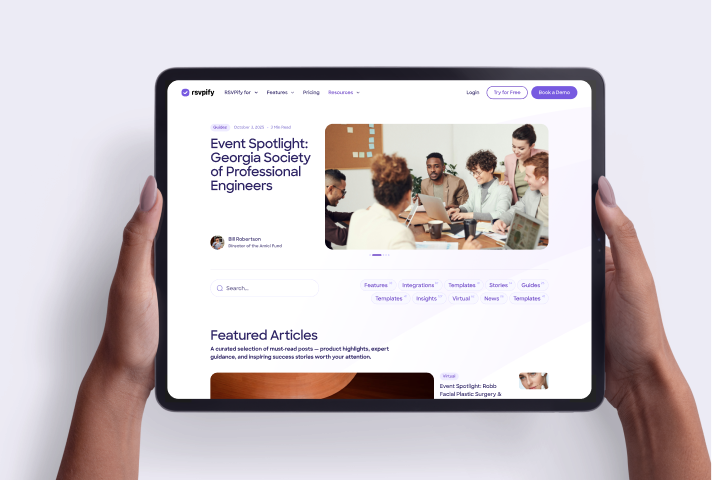Event attendance tracking is essential for any successful event, whether it’s a corporate seminar, wedding, conference, or gala. Accurately knowing who attended—both in real-time and post-event—plays a crucial role in:
Managing these processes manually or through spreadsheets can lead to errors and wasted time. An event registration platform like RSVPify offers powerful tools to automate and enhance attendance tracking. Below are five hacks to leverage RSVPify for better tracking and event success.
Think of any event you've attended where you were greeted by jaw-droppingly long lines waiting to get in. Not only is a flawed event check-in process a nightmare for event planning logistics, but it offers a terrible first impression for attendees and sponsors alike. While careful planning and hiring ample event staff can solve some of these challenges, utilizing event check-in software can be a game changer for events with large guest lists. Here's how it can help:
This ensures smooth, quick check-ins while maintaining an up-to-date attendance log.
RSVPify allows you to customize your event registration form to collect essential information beyond simple RSVP responses. Use the registration process to:
With customized questions, your attendance tracking becomes more than just headcounts—it provides insights to enhance the event experience. While you can't possibly remove all of the guesswork in event planning, improperly leveraging your registration form is a huge missed opportunity to reduce stress and logistical headaches when the big day arrives.
Event planning often involves multiple collaborators, from vendors and catering teams to internal stakeholders and on-site staff. A registration platform like RSVPify simplifies this process by making attendance data shareable and accessible.
This ensures that everyone stays aligned and on top of changes throughout the event. You can access larger levels of event collaborators with RSVPify's more advanced plans. Learn more here.
Post-event analysis is critical for calculating ROI and planning future events. With RSVPify’s integrations, you can:
These integrations saves time and minimizes manual data entry, allowing you to focus on more strategic tasks post-event. You can also leverage existing processes and dashboards to process data more quickly, instead of needing to learn a new platform on the fly (or rely on expensive account managers from your event software vendors).
Once the event concludes, use RSVPify's custom tags and conditional logic to segment attendees based on their participation and send personalized follow-ups.
Automating these communications keeps your audience engaged while offering valuable insights to improve future events.
About the Author
Adam Hausman co-founded RSVPify in 2013 and has been passionate about event tech and ticketing software ever since. Also founder of Greenlight Growth Marketing, he holds degrees from Indiana University (BA English/Psychology 2008) and the University of Illinois-Chicago (M.Ed. Secondary Education 2012). He lives in Maine with his wife, 2 kids, and 2 annoying cats.
On this page:
#1: Use the Event Check-In Suite for Real-Time Event Attendance Tracking #2: Capture Key Event Attendee Info With Custom Questions During the Event Registration Process #3: Share Attendance Data With All Stakeholders for Real-Time Planning and Operations #4: Integrate With Key Tools for Seamless Data Transfer #5: Automate Post-Event CommunicationsGet the latest product updates, event planning tips, and industry insights — straight to your inbox.
You can unsubscribe at any time. Your email will only be used to send RSVPify updates and will never be shared.
